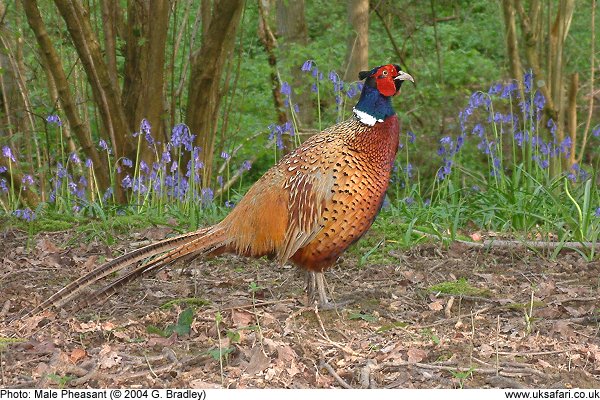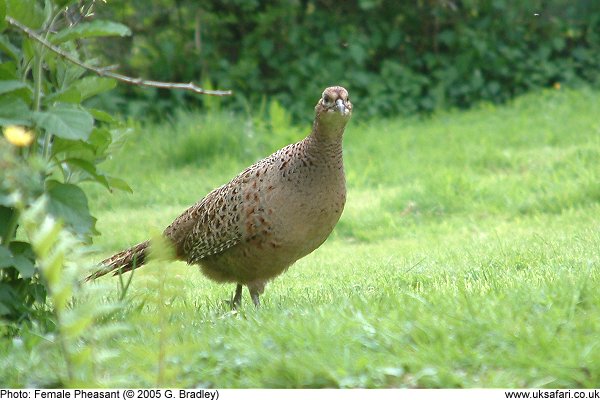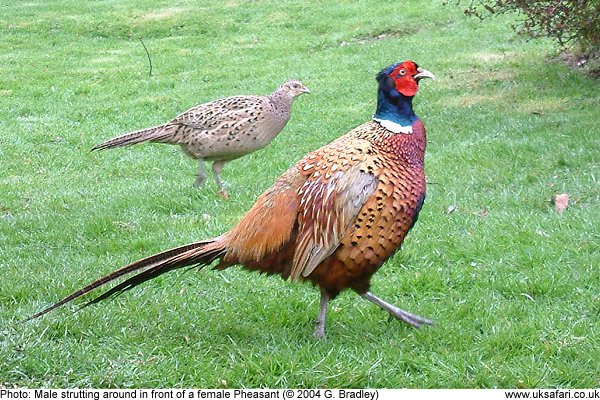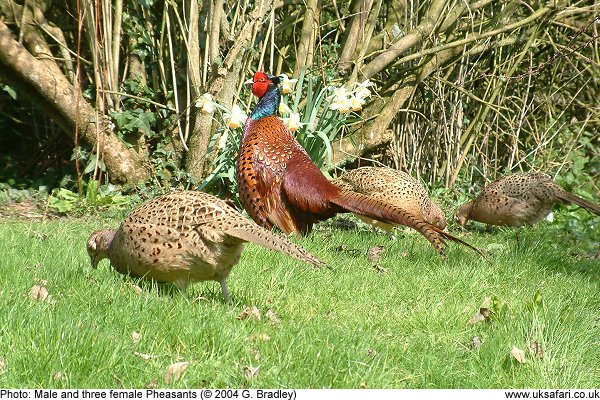 Quick Facts
Quick Facts
Scientific name: Phasianus colchicus
Size: Length 45 to 55cm. The tail of the male is around 40cm.
Distribution: Found throughout the UK
Months seen: All year round
Habitat: Farmland, particularly at the edges of fields where there is plenty of cover to hide from predators
Food: Invertebrates, seeds and berries
Special features: Pheasants are the most widely seen of all the game birds (birds hunted for sport). Originally from Asia, they were probably introduced into Britain in Roman times for food.
Over the centuries the original birds have interbred and produced a multitude of colour variations in the plumage. To attract the females during the spring mating season the male sports an amazing mask of flame-red facial wattles, along with erect feather ears. He performs a ritual dance, vibrating his tail feathers and shouting his "cuk cuk" call.
When disturbed, pheasants prefer to run to cover and tend not to fly long distances. They have short broad wings with powerful flight muscles. When disturbed or in danger they can rise up from the ground faster than any other bird of a similar size and weight. The noisy flapping sound they make as they take off is often sufficient to scare away predators.
The female takes all the responsibility for incubating the eggs and rearing the chicks. Her subtle coloured plumage gives her more protection from predators.
Every autumn the pheasant population of the UK is swelled as gamekeepers release millions of captive bred birds for the annual shoot. Although the shoot runs from October to February probably less than three quarters of the released birds are shot. A great many end up as casualties on the roads.
 Related Pages
Related Pages

 Popular Pages
Popular Pages
Amphibians, Bats, Badgers, Beetles, Birds, Birds of Prey, Bumble Bees, Butterflies, Caterpillars, Creepy-Crawlies, Deadly Spiders, Dolphins, Dragonflies, E-Postcards, False Widow Spiders, Free Newsletter, Frogs, Fungi, Garden Spiders, Glow-Worms, Grey Squirrels, Hedgehogs, House Spiders, Ladybirds, Mammals, Marine Mammals, Moths, Owls, Reptiles, Spiders, Toads, Trees, Wildlife Hospitals
© Copyright 2017 G. Bradley - UK Safari | About Us | Links | Contributors


 Pheasants
Pheasants





